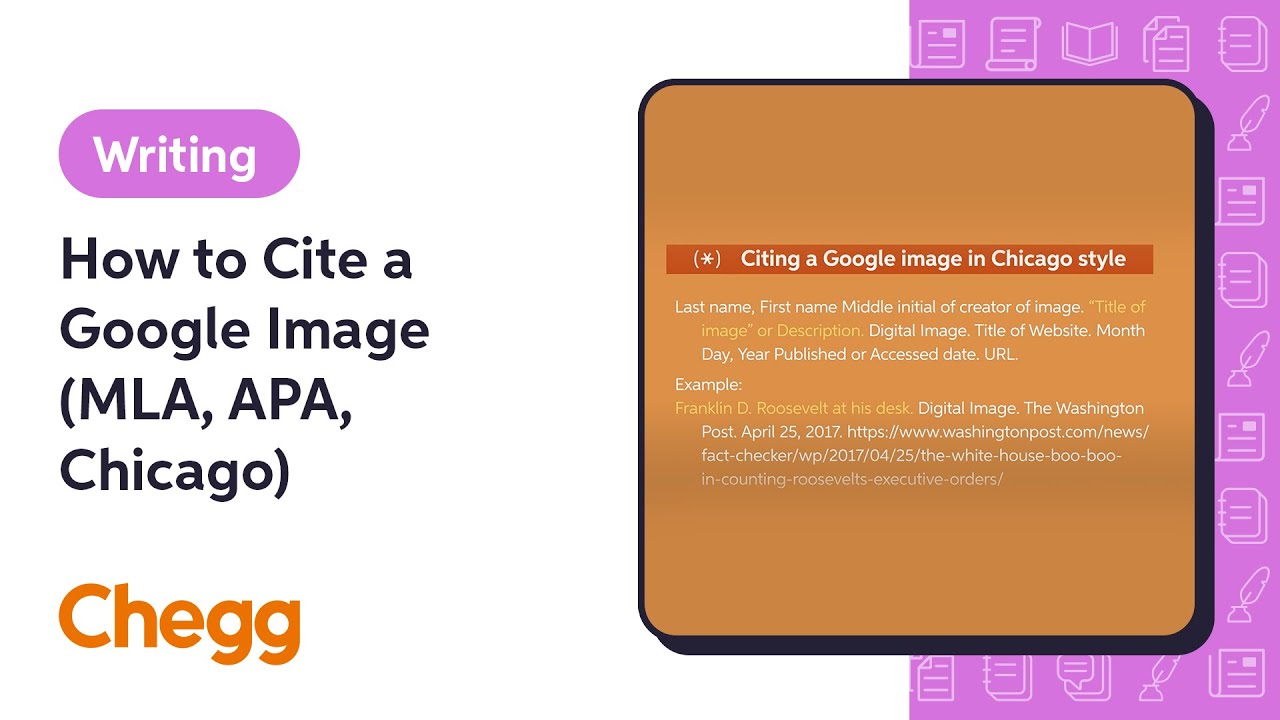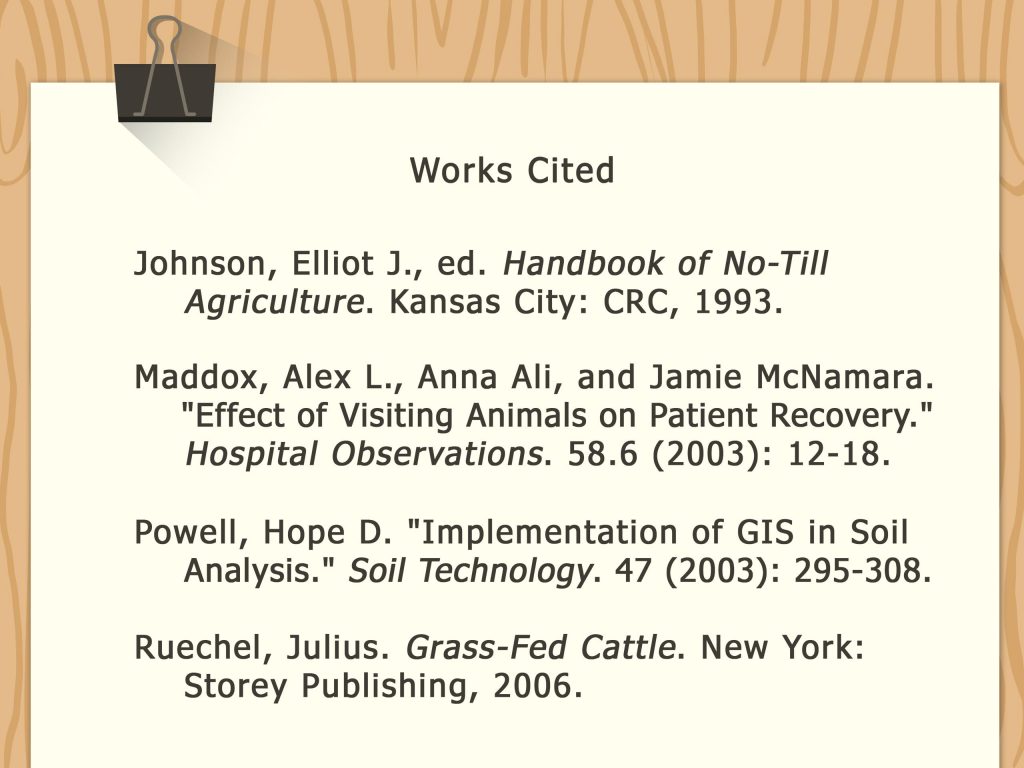Getty Images is a treasure trove of high-quality photos, illustrations, and videos, widely used by creatives, marketers, and bloggers. But with great resources come great responsibilities, especially when it comes to copyright. Understanding how to navigate copyright laws surrounding Getty Images is essential to avoid legal hassles. When you use images from Getty, you're not just grabbing a cool pic; you're entering a complex world of licensing agreements and rights management. So, let's unpack what this means for you as a content creator.
Understanding the Importance of Proper Citation

Proper citation of Getty Images isn't just about staying on the right side of the law; it's about respecting the artists and creators behind the work. Think of it this way: when you share or repurpose an image, you're showcasing someone else's talent. Acknowledging their work not only builds trust but also fosters a community of creativity. Here are a few key reasons why proper citation matters:
- Legal Protection: Using images without proper citation can lead to copyright infringement, resulting in fines or lawsuits. By citing correctly, you protect yourself from potential legal issues.
- Respect for Creators: Every image has a creator behind it. Citing them shows you appreciate their work and support the creative industry.
- Enhancing Your Credibility: Properly citing your sources establishes your integrity as a content creator. It shows your audience that you care about accuracy and ethics.
So, how do you properly cite Getty Images? The citation usually includes the creator's name, the title of the work, the source (Getty Images), and the URL. Here’s a simple structure you can follow:
| Element | Example |
|---|---|
| Creator's Name | Jane Doe |
| Title of Work | Sunset Over the Mountains |
| Source | Getty Images |
| URL | www.gettyimages.com/example |
By following these guidelines, you can enjoy the beautiful imagery Getty Images has to offer while also giving credit where it's due. Remember, proper citation is not just a formality; it's a commitment to creativity and community. So, next time you find that perfect image, make sure to give the creator their well-deserved recognition!
Also Read This: How to Access Free Getty Images: Ways to Legally Use Getty Images Without Payment
3. Types of Getty Images and Their Licensing

When diving into the world of Getty Images, it’s essential to understand the different types of images available and their respective licensing options. Getty Images is a treasure trove of visual content, and knowing how to navigate it can enhance your projects significantly. Here’s a breakdown of the primary categories of
- Editorial Images: These images are typically used for news-related purposes. They capture real events, places, people, and can be utilized in newspapers, magazines, and blogs discussing current affairs. However, they cannot be used for commercial purposes.
- Creative Images: These are high-quality images intended for commercial use. They can be used in marketing materials, advertisements, and other promotional content. Keep in mind that you must purchase a license for commercial use.
- Royalty-Free Images: This type of licensing allows you to pay a one-time fee to use the image multiple times without additional costs. The license often comes with specific usage rights, so it’s crucial to read the fine print.
- Rights Managed Images: These images come with specific restrictions on usage, such as duration, location, and medium. The fee is typically higher, reflecting the image’s exclusivity and potential value.
Understanding these categories is vital for selecting the right images for your work. Always choose the type that aligns with your project’s needs and budget. Additionally, ensure you adhere to the licensing agreement to avoid any legal issues.
Also Read This: How to Get the Rights to Use Getty Images for Your Projects
4. Step-by-Step Guide to Citing Getty Images
Citing Getty Images correctly is not just a best practice; it’s a way to respect the creators behind the content you use. Here’s a simple, step-by-step guide to help you cite Getty Images properly.
- Identify the Image: Start by finding the image you wish to use on Getty Images. Make sure to note the title, photographer’s name, and any relevant keywords.
- Choose the Correct Citation Style: Depending on your project, you may need to use different citation styles (APA, MLA, Chicago, etc.). Make sure you know which style you need to follow.
- Gather Necessary Information: For most citation styles, you’ll need the following:
- Photographer's name
- Title of the image
- Year of publication
- Source (Getty Images)
- URL where the image can be found
- Format Your Citation: Here’s how you can format your citation based on different styles:
- APA: Last name, First initial. (Year). Title of image [Description]. Getty Images. URL
- MLA: Last Name, First Name. "Title of Image." Getty Images, Year, URL.
- Chicago: Last Name, First Name. Year. "Title of Image." Getty Images. URL.
- Include the Citation in Your Work: Make sure to place your image citation in the appropriate section of your work, whether that’s in a caption, bibliography, or reference list.
By following these steps, you’ll ensure that you’re giving proper credit to the artists and maintaining the integrity of your work. Happy citing!
Also Read This: How to Find Free Getty Images for Marketing Campaigns
5. Common Citation Styles for Getty Images
When it comes to citing Getty Images, consistency and clarity are key. Different fields have their preferred citation styles, and Getty Images typically recommends following these common formats:
- APA (American Psychological Association): Widely used in social sciences, the APA style emphasizes the author's last name and the publication year. For an image, your citation will look something like this:
- MLA (Modern Language Association): Common in humanities, MLA requires the creator's name, the title of the image, and the source. Here’s how it could appear:
- Chicago/Turabian: Often used in history and some social sciences, this style offers two systems: Notes and Bibliography or Author-Date. It’s essential to choose the right one based on your audience.
Let’s take a closer look at how each style handles Getty Images:
APA Style Example:
Author, A.A. (Year). Title of image [Format]. Source. URL
MLA Style Example:
Author Last Name, First Name. Title of Image. Getty Images, Year. URL
Chicago Style Example:
Author Last Name, First Name. Title of Image. Year. Getty Images. URL
Keep in mind that each of these styles has specific requirements, such as capitalizing certain words or italicizing titles. Always refer to the latest guidelines for the style you’re using to ensure accuracy.
Also Read This: How to Buy Getty Images for Personal Use Without Complicating the Process
6. Examples of Properly Cited Getty Images
Now that we’ve covered the common citation styles, let’s dive into some real examples of how to properly cite Getty Images. These examples will help you visualize how to format your citations effectively.
Example 1: APA Citation
Imagine you’re using an image of a stunning sunset by a renowned photographer. Your citation in APA style would look like this:
Smith, J. (2023). Beautiful sunset over the ocean [Photograph]. Getty Images. https://www.gettyimages.com/detail/photo/beautiful-sunset-over-the-ocean-royalty-free-image/123456789
Example 2: MLA Citation
For the same image in MLA style, your citation would be formatted as follows:
Smith, John. Beautiful Sunset Over the Ocean. Getty Images, 2023. https://www.gettyimages.com/detail/photo/beautiful-sunset-over-the-ocean-royalty-free-image/123456789
Example 3: Chicago Citation
In Chicago style, the citation would appear like this:
Smith, John. Beautiful Sunset Over the Ocean. 2023. Getty Images. https://www.gettyimages.com/detail/photo/beautiful-sunset-over-the-ocean-royalty-free-image/123456789
These examples showcase the necessary elements: the creator's name, the title, the year, and the URL. Adjust your citations accordingly based on the specific requirements of your academic or professional context.
Proper citation not only gives credit to the creators but also adds credibility to your work. So, next time you use Getty Images, remember to cite them correctly!
Also Read This: Where can I get license free images or pictures
7. Tips for Avoiding Copyright Issues
When it comes to using images in your work, being mindful of copyright is crucial. Here are some practical tips to help you steer clear of any copyright complications:
- Always Use Licensed Images: The easiest way to avoid copyright issues is to use images that you have the right to use. Platforms like Getty Images provide clear licensing agreements, so ensure you’re aware of the terms associated with any image you choose.
- Check Usage Rights: Before using an image, confirm whether it’s for commercial or personal use and what the specific restrictions are. This will help you understand the boundaries of using that image.
- Keep Records: Maintain a detailed record of where you sourced your images, including purchase receipts or licensing agreements. In case there's ever a question about usage, you’ll have proof of your rights.
- Consider Creative Commons: Some images are available under Creative Commons licenses, which allow certain uses without the need for payment. However, be sure to read the specifics of the license; some may require attribution or have restrictions on modifications.
- Avoid Alteration: Even with a license, altering an image without permission can lead to copyright issues. Stick to using images as they are provided unless you have explicit permission to modify them.
- Educate Yourself: Understanding copyright laws can be a game changer. Familiarize yourself with the differences between copyright, trademark, and fair use to make informed decisions about image usage.
- Consult Legal Advice: If you’re ever in doubt, especially regarding commercial projects, don’t hesitate to seek legal advice. It's worth the investment to prevent potential legal troubles down the line.
By following these tips, you can confidently incorporate images into your work while respecting the rights of the creators. Remember, it's not just about avoiding penalties; it's about supporting artists and their work!
8. Conclusion and Best Practices
In conclusion, properly citing Getty Images and any other visual content is not just a legal safeguard but also a mark of respect for the creators behind the images. When you acknowledge the source, you contribute to a culture of integrity within the creative community. Here are some best practices to keep in mind:
- Understand Licensing Options: Familiarize yourself with the different types of licenses Getty offers. Whether it's a rights-managed or royalty-free license, knowing these can help you select the right images for your purpose.
- Provide Clear Attribution: When required, make sure your attribution is clear and correctly formatted. This often includes the name of the photographer and the source, typically formatted as "Image courtesy of [Photographer's Name]/Getty Images."
- Stay Updated: Copyright laws and licensing agreements can change. Regularly check for updates from image providers like Getty to ensure you're compliant with the latest requirements.
- Be Selective: Choose images that genuinely enhance your content. High-quality, relevant images not only engage your audience but also reflect your professionalism.
- Encourage Original Work: Whenever possible, consider creating your own images or hiring photographers. This approach gives you complete control over your visuals and helps you build a unique brand identity.
By implementing these best practices, you can navigate the world of image licensing with confidence. Always remember that respecting copyright not only protects you legally but also fosters a thriving artistic community. Happy creating!
 admin
admin








